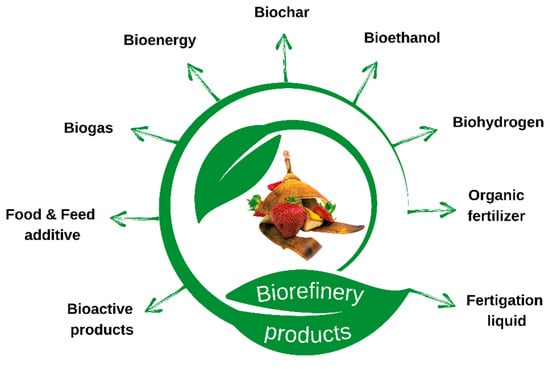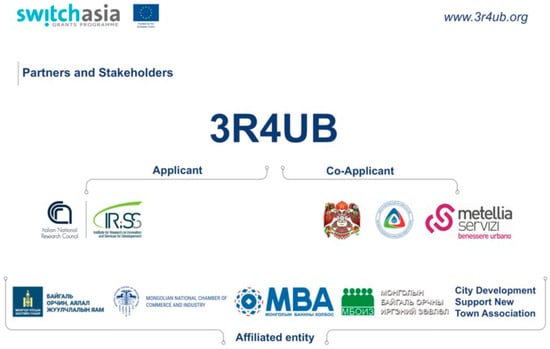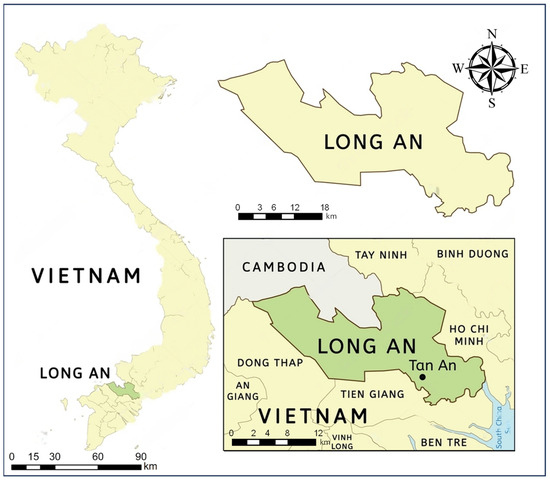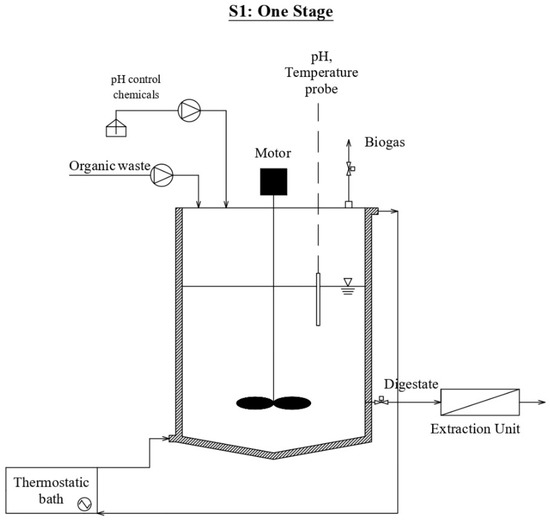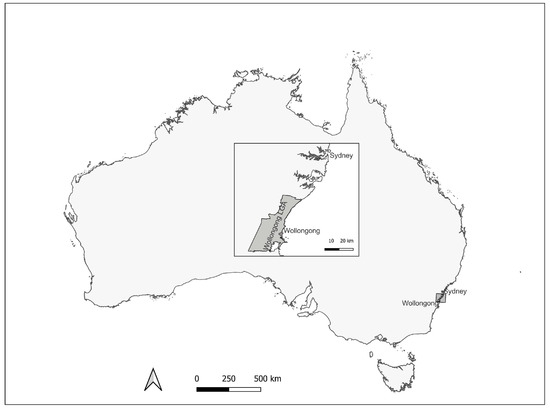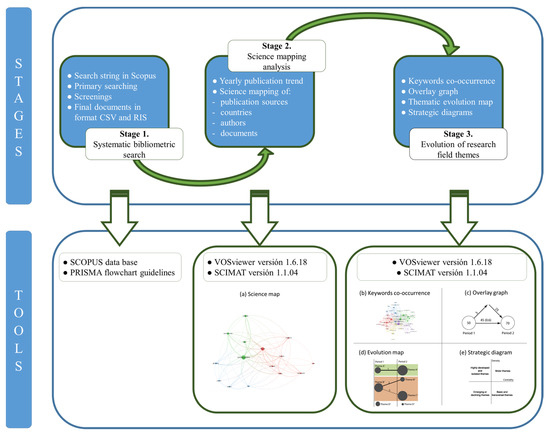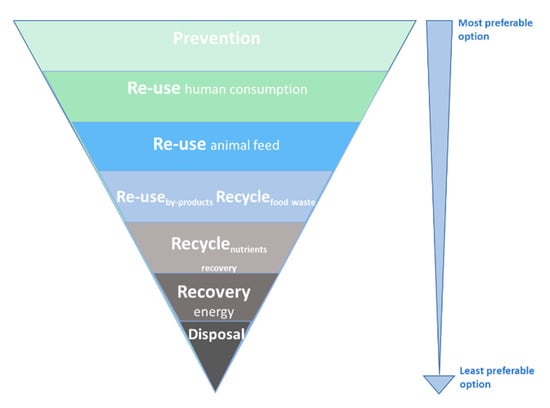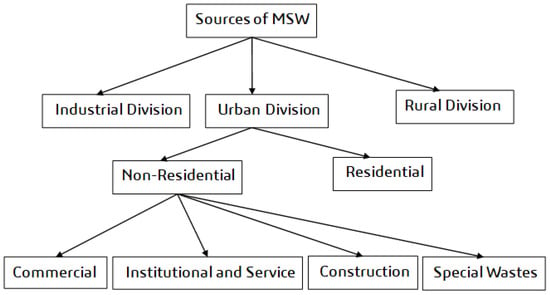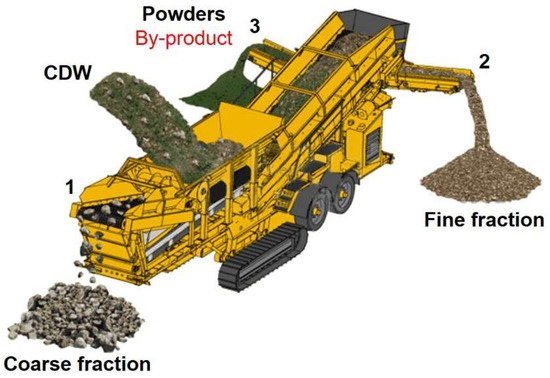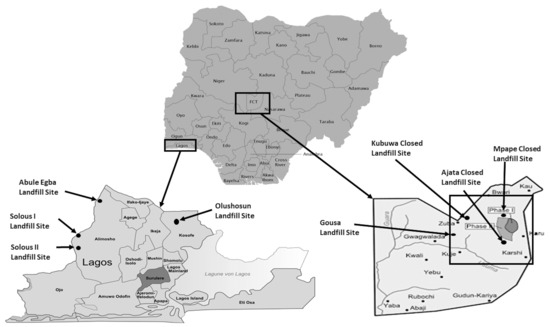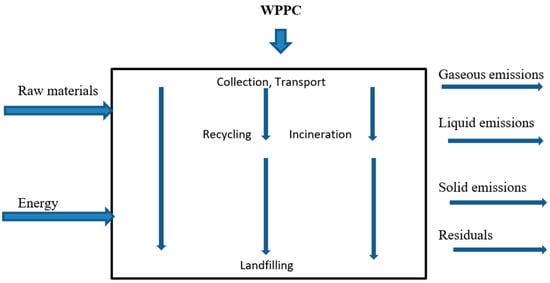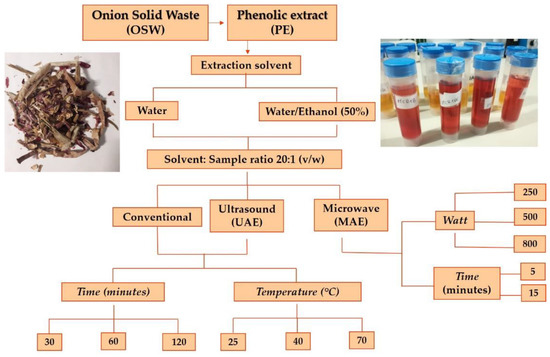Towards the Full Inclusion of Waste Management into Circular Economy
A project collection of Sustainability (ISSN 2071-1050). This project collection belongs to the section "Waste and Recycling".
Papers displayed on this page all arise from the same project. Editorial decisions were made independently of project staff and handled by the Editor-in-Chief or qualified Editorial Board members.
Viewed by 58726
Share This Project Collection
Editors
 Prof. Dr. Paolo S. Calabrò
Prof. Dr. Paolo S. Calabrò
 Prof. Dr. Paolo S. Calabrò
Prof. Dr. Paolo S. Calabrò
E-Mail
Website
Guest Editor
Department of Civil, Energy, Environmental and Materials Engineering, Università Degli Studi Mediterranea di Reggio Calabria, Via Graziella, Loc. Feo di Vito, 89122 Reggio Calabria, Italy
Interests: anaerobic digestion; biomethane; environmental engineering; landfill biogas
Special Issues, Collections and Topics in MDPI journals
 Dr. Daily Rodriguez Padrón
Dr. Daily Rodriguez Padrón
 Dr. Daily Rodriguez Padrón
Dr. Daily Rodriguez Padrón
E-Mail
Website
Guest Editor
Departamento de Química Orgánica, Universidad de Córdoba, Campus de Rabanales, Edificio Marie Curie (C-3), Ctra Nnal IV-A, Km 396, E14014 Cordoba, Spain
Interests: nanomaterials; bioconjugates; biomass valorization; catalysis; energy storage; mechanochemistry; green chemistry
Project Overview
Dear Colleagues,
Sustainable waste management and the recovery of materials from waste (recycling) is one of the pillars of the circular economy, but many waste management processes and technologies can be still considered in their infancy, and in many countries waste management is still mainly based on disposal in uncontrolled landfills and open dumps.
We invite you to join this Special Issue to share your vision for novel processes aimed at converting waste (e.g., municipal waste, biodegradable industrial waste, wastewater sludge) into chemicals, secondary raw materials, biofuels, and energy. Papers dealing with innovations in landfill construction and management having the objective of sustainably disposing of residual waste are also welcome.
Reviews of exceptional quality on the same topics can be proposed to the Special Issue Guest Editors.
Papers based on field studies reporting only the results of conventional waste management process application are not within the scope of this Special Issue.
Prof. Dr. Paolo S. Calabrò
Dr. Daily Rodriguez Padrón
Guest Editors
Manuscript Submission Information
Manuscripts should be submitted online at www.mdpi.com by registering and logging in to this website. Once you are registered, click here to go to the submission form. Manuscripts can be submitted until the deadline. All submissions that pass pre-check are peer-reviewed. Accepted papers will be published continuously in the journal (as soon as accepted) and will be listed together on the collection website. Research articles, review articles as well as short communications are invited. For planned papers, a title and short abstract (about 100 words) can be sent to the Editorial Office for announcement on this website.
Submitted manuscripts should not have been published previously, nor be under consideration for publication elsewhere (except conference proceedings papers). All manuscripts are thoroughly refereed through a single-blind peer-review process. A guide for authors and other relevant information for submission of manuscripts is available on the Instructions for Authors page. Sustainability is an international peer-reviewed open access semimonthly journal published by MDPI.
Please visit the Instructions for Authors page before submitting a manuscript.
The Article Processing Charge (APC) for publication in this open access journal is 2400 CHF (Swiss Francs).
Submitted papers should be well formatted and use good English. Authors may use MDPI's
English editing service prior to publication or during author revisions.
Keywords
- biomass valorization
- biorefinery
- biowaste
- circular economy
- municipal waste
- municipal wastewater sludge
- industrial waste
- separate collection
- sustainable landfill
- waste management
Published Papers (15 papers)
Open AccessReview
Sustainable Management Strategies for Fruit Processing Byproducts for Biorefineries: A Review
by
Alfred Błaszczyk, Sylwia Sady, Bogdan Pachołek, Dominika Jakubowska, Mariola Grzybowska-Brzezińska, Małgorzata Krzywonos and Stanisław Popek
Cited by 6 | Viewed by 2569
Abstract
The fruit processing industry generates enormous amounts of byproducts, which are primarily removed through landfill or incineration. However, these processes cause carbon dioxide and methane emissions and release dioxin into the environment. The management of fruit processing byproducts is important for reducing the
[...] Read more.
The fruit processing industry generates enormous amounts of byproducts, which are primarily removed through landfill or incineration. However, these processes cause carbon dioxide and methane emissions and release dioxin into the environment. The management of fruit processing byproducts is important for reducing the amount of food waste that is sent to landfills and for developing strategies through the reuse of these products for valorization and economic added value. Fruit processing byproducts are rich sources of bioactive compounds and fermentable and nonfermentable sugars. Therefore, these materials are very attractive feedstocks for developing integrated multifeed biorefineries that coproduce a wide range of natural products and bioenergy. The studies presented here have shown sustainable strategies for managing fruit processing byproducts via a biorefinery approach to achieve full valorization via a circular economy. The full valorization project proposed five main phases, namely, pretreatment, extraction, dark or aerobic fermentation, anaerobic digestion, and post-treatment, as well as two additional pathways to generate additional bioelectricity. When choosing the appropriate directions for the presented concept, a technoeconomic analysis should be carried out, considering the type of biomass and its availability at the site of the biorefinery and throughout the year of production. Applying the proposed concept of biorefineries in closed-loop technology is a promising way to enhance economic efficiency and decrease environmental influence in accordance with sustainable development.
Full article
►▼
Show Figures
Open AccessArticle
A Collaborative Approach for Triggering Environmental Awareness: The 3Rs for Sustainable Use of Natural Resources in Ulaanbaatar (3R4UB)
by
Gabriella Esposito De Vita, Cristina Visconti, Gantuya Ganbat and Marina Rigillo
Cited by 4 | Viewed by 2094
Abstract
Current environmental challenges invite us to deeply revise policies, governance models, and resource management toolkits towards a circular approach, in order to meet Sustainable Development Goals (SDGs) requirements. In this framework, circular waste management is one of the pillars of responsible and foresighted
[...] Read more.
Current environmental challenges invite us to deeply revise policies, governance models, and resource management toolkits towards a circular approach, in order to meet Sustainable Development Goals (SDGs) requirements. In this framework, circular waste management is one of the pillars of responsible and foresighted planning for territorial sustainability. The “3Rs for a sustainable use of natural resources in Ulaanbaatar” (3R4UB) project aims at transferring a sustainable approach to urban solid waste management, especially focusing on providing effective opportunities for developing circular supply chains locally. In this framework, an integrated approach has been developed in order to adapt the communication/exploitation plan of sustainable waste management within a SWITCH-Asia Country (EU Program) by combining engagement tools and participatory processes for the collaborative design of a waste management masterplan. This paper explores the spatialization of resources/waste flows in the formal and informal settlements, while also considering cultural traditions, social structures, and community habits, in terms of a purposely designed combination of spatial planning, governance modeling, and capacity building activities. Starting from a preliminary communication plan, this paper sets the frame for discussing the role of community engagement tools and protocols in producing an effective and generalizable collaborative waste management masterplan.
Full article
►▼
Show Figures
Open AccessArticle
Towards Sustainable Composting of Source-Separated Biodegradable Municipal Solid Waste—Insights from Long An Province, Vietnam
by
Tan Loi Huynh, Thi Kim Oanh Le, Yong Jie Wong, Chi Tuong Phan and Thi Long Trinh
Cited by 7 | Viewed by 1965
Abstract
Inadequate municipal solid waste (MSW) management has become a pressing concern, resulting in significant environmental contamination, particularly in developing countries. Composting has demonstrated its practicality and feasibility for addressing this issue; however, the lack of at-source solid waste separation remains a major challenge.
[...] Read more.
Inadequate municipal solid waste (MSW) management has become a pressing concern, resulting in significant environmental contamination, particularly in developing countries. Composting has demonstrated its practicality and feasibility for addressing this issue; however, the lack of at-source solid waste separation remains a major challenge. As a result, in this study, the first sustainable MSW separation at source was conducted in Tan An City, Long An Province. The objective of this study was to evaluate the compost process and quality using Tan An City’s separated biodegradable organic solid waste as the raw material, through a windrow composting process with active aeration. Biodegradable organic waste, slow-biodegradable organic waste and plastic waste accounted for 84.5%, 15.1% and 0.4%, respectively, of the total waste. The pH, moisture, volatile solid percentage, total nitrogen, total organic carbon and carbon-to-nitrogen ratio of the separated solid waste were 8.7 ± 0.4, 76.8 ± 1.9%, 68.3 ± 1.3%, 2.1 ± 0.1%, 35.7 ± 2.2% and 17 ± 0.8, respectively. Rice straw was mixed with solid waste as a bulking material in a 31%:69% ratio to achieve a moisture content of 55% in the mixture. After 10 weeks, an evaluation of the compost’s quality revealed its potential suitability for agricultural applications. Notably, Salmonella was not detected in the compost, and the heavy metal levels were below standard limits, indicating the safety of the compost. To ensure optimal nutrient levels for effective plant growth, a slight nitrogen and phosphorus supplement was recommended. Aligned with the C/N ratio of 12.1 and a consistent temperature of approximately 29 °C, this indicates a high degree of maturity and stability in the composting process. The framework of this study demonstrates the effectiveness of at-source MSW separation in paving a sustainable path for MSW management.
Full article
►▼
Show Figures
Open AccessArticle
Wet Anaerobic Codigestion of Sewage Sludge and OFMSW in Pilot-Scale Continuously Stirred Tank Reactors: Focus on the Reactor Microbial Communities
by
Isabella Pecorini, Elena Rossi, Simone Becarelli, Francesco Baldi, Simona Di Gregorio and Renato Iannelli
Cited by 1 | Viewed by 1893
Abstract
Dark fermentation (DF) is a simple method for hydrogen (H
2) production through the valorization of various organic wastes that can be used as feedstock. In particular, an organic fraction of municipal solid waste (OFMSW) is a fermentation substrate that can easily
[...] Read more.
Dark fermentation (DF) is a simple method for hydrogen (H
2) production through the valorization of various organic wastes that can be used as feedstock. In particular, an organic fraction of municipal solid waste (OFMSW) is a fermentation substrate that can easily be gathered and provides high yields in biogas and value-added organic compounds such as volatile fatty acids (VFAs). DF is coupled with a methanogenic reactor to enhance biogas production from the OFMSW. In this study, a two-stage reactor was conducted and monitored to optimize the methane yield by reducing the HRT at the DF reactor. A focus of the functional inference based on a next-generation sequence (NGS) metabarcoding analysis and comparison of microbial communities that populate each reactor stage was performed. Concerning gas quality, the two-stage system observed a hydrogen-rich biogas in the first fermentative reactor (on average 20.2%) and an improvement in the methane content in the second methanogenic digester, which shifted from 61.2% obtained for the one-stage experiment to 73.5%. Such increases were due to the improvement in substrate hydrolysis. As for the specific biogas production, the results showed an overall increase of 50%.
Full article
►▼
Show Figures
Open AccessArticle
Management of Household Plastic Waste in Wollongong, Australia: The Role of Selective Waste Collection Systems
by
Marcella Bernardo, Hugh Forehead, Isabella De Carvalho Vallin and Sylmara L. F. Gonçalves-Dias
Cited by 5 | Viewed by 3907
Abstract
In addition to increasing requirements to adopt more circular economy approaches, Australian municipal waste management systems also face challenges due to the loss of capacity to export waste overseas. Accordingly, these systems will require effective sorting and collecting of waste. Selective Waste Collection
[...] Read more.
In addition to increasing requirements to adopt more circular economy approaches, Australian municipal waste management systems also face challenges due to the loss of capacity to export waste overseas. Accordingly, these systems will require effective sorting and collecting of waste. Selective Waste Collection (SWC) is the collecting and sorting of household recyclable waste. The study aimed at investigating how SWC systems in an Australian municipality (Wollongong) are organised and their role in the proper management of household plastic waste. For this purpose, we mapped the household plastic waste management system and characterised every SWC system in terms of, e.g., weight and type of plastic collected. We estimated that only about 20% of the household plastic waste generated in 2018–2019 was collected via the SWC systems. Our investigation enabled us to estimate Wollongong’s household plastic waste generation, recycling rate, and final disposal; identify the gaps in knowledge and challenges faced by the systems; and offer recommendations to overcome them. The challenges include contamination, insufficient community awareness, and lack of consistent waste data. Our recommendations include a transition from a commingled to a non-commingled system. The results provide a useful approach and crucial information for performance evaluation, strategy, and planning purposes.
Full article
►▼
Show Figures
Open AccessArticle
Waste to Energy from Municipal Wastewater Treatment Plants: A Science Mapping
by
Juan Jesús De la Torre Bayo, Jaime Martín Pascual, Juan Carlos Torres Rojo and Montserrat Zamorano Toro
Cited by 6 | Viewed by 4126
Abstract
Energy recovery, according to circular economy and sustainable principles, has established itself as an inevitable field of action in wastewater treatment plants (WWTPs). Energy costs are forcing the optimization of processes and increases in the development of applicable waste-to-energy (WtE) technologies. This study
[...] Read more.
Energy recovery, according to circular economy and sustainable principles, has established itself as an inevitable field of action in wastewater treatment plants (WWTPs). Energy costs are forcing the optimization of processes and increases in the development of applicable waste-to-energy (WtE) technologies. This study aims to analyze the existing knowledge on WtE research in municipal WWTPs using a systematic literature review and a bibliometric analysis from 1979 to 2021. For this purpose, Science Mapping Analysis Tool (SciMAT) and VosViewer, two softwares for analyzing performance indicators and visualizing scientific maps, were used to identify the most relevant figures in the research. The results show an exponential increase in the number of publications over time, which has yet to reach a stage of maturity. The analysis of the evolution of the topics exposes variability in the keywords over the years. The main field of WtE research has focused on sludge treatment, with technologies ranging from anaerobic digestion to more recently-emerging ones such as microalgae or membrane technologies. The analysis also identified the need for more publications on other wastes in WWTPs, which are necessary to achieve zero waste.
Full article
►▼
Show Figures
Open AccessArticle
The Need for a Proper Waste Management Plan for the Construction Industry: A Case Study in Lebanon
by
Ali Saad, Menoka Bal and Jamal Khatib
Cited by 5 | Viewed by 5258
Abstract
The construction industry is known as one of the biggest generators of solid waste. Considering this, attention needs to be paid to construction and demolition (C&D) waste. Lebanon has experienced many situations that have increased the generation of C&D waste. Therefore, it is
[...] Read more.
The construction industry is known as one of the biggest generators of solid waste. Considering this, attention needs to be paid to construction and demolition (C&D) waste. Lebanon has experienced many situations that have increased the generation of C&D waste. Therefore, it is essential to manage C&D waste. This research aims to assess and analyse the importance of waste management plans and their impact on the generation of construction and demolition waste in Lebanon. For this purpose, an extensive literature review has been carried out, and a questionnaire survey consisting of five sections has been developed. Factors were ranked by using 5-point Likert scales. Additionally, four optional open-ended questions were also included in the survey for qualitative data collection. A survey questionnaire was sent to 80 Lebanese experts, and 50 questionnaires were returned. Most of the responses (i.e., consultants and academics) were from the private sector; results showed that respondents to this survey were biased for their expertise. Reliability and ranking analysis were performed on the collected data. It was found that “site management and supervision-related factors” are the main sources of C&D waste. The main barrier to implement 3R was the “lack of awareness and knowledge”, and the most critical success factor was “waste management regulations”. There is lack of data on construction waste in Lebanon. Therefore, there is a need to conduct research on construction waste management in Lebanon, which is the subject of the current investigation. This research is expected to generate benefits for the construction industry in Lebanon and the surrounding region.
Full article
►▼
Show Figures
Open AccessArticle
Advanced Bioethanol Production from Source-Separated Bio-waste in Pilot Scale
by
Panagiota Tsafara, Konstantinos Passadis, Diogenis Christianides, Emmanouil Chatziangelakis, Ioannis Bousoulas, Dimitris Malamis, Sofia Mai, Elli Maria Barampouti and Konstantinos Moustakas
Cited by 6 | Viewed by 4039
Abstract
The Sustainable Development Goals along with national policies pave the way to a sustainable, circular, and resource efficient development model. The environmental scenario could change with the promotion of biofuels such as bioethanol. Recent research on bioethanol aspires to reduce the costs production,
[...] Read more.
The Sustainable Development Goals along with national policies pave the way to a sustainable, circular, and resource efficient development model. The environmental scenario could change with the promotion of biofuels such as bioethanol. Recent research on bioethanol aspires to reduce the costs production, via the optimization of process variables and the increase in ethanol yields. This study presented a stepwise upscaling of bioethanol production from dried source-separated municipal biowaste. Three different scales (250 mL, 4 L, 100 L) were examined applying advanced ethanol production via simultaneous saccharification and fermentation. The bioprocess runs at each of the three scales and produced very similar ethanol yields, indicating excellent scalability. The validated optimum conditions at the pilot scale were 25% solids loading, Spirizyme 40 μL/g starch, NS87014 175 μL/g cellulose, and 2%
S. cerevisiae. The results from the pilot trials were very successful and repeatable. Τhe mean ethanol yield was 86.60 ± 4.91%, while the structural component such as starch and cellulose were efficiently hydrolysed. The produced ethanol was recovered and purified meeting the standards of absolute ethanol, rendering it suitable for industrial uses and for biofuel use as well. Energy consumption aspects were discussed as well. Conclusively, all the stages of the value chain for source-separated biowaste valorisation (collection, treatment, added value product recovery) were successfully showcased.
Full article
►▼
Show Figures
Open AccessReview
A Review on Characteristics, Techniques, and Waste-to-Energy Aspects of Municipal Solid Waste Management: Bangladesh Perspective
by
Hridoy Roy, Samiha Raisa Alam, Rayhan Bin-Masud, Tonima Rahman Prantika, Md. Nahid Pervez, Md. Shahinoor Islam and Vincenzo Naddeo
Cited by 47 | Viewed by 9956
Abstract
Municipal solid waste (MSW) management has become a major concern for developing countries. The physical and chemical aspects of MSW management and infrastructure need to be analyzed critically to solve the existing socio-economic problem. Currently, MSW production is 2.01 billion tonnes/yr. In developing
[...] Read more.
Municipal solid waste (MSW) management has become a major concern for developing countries. The physical and chemical aspects of MSW management and infrastructure need to be analyzed critically to solve the existing socio-economic problem. Currently, MSW production is 2.01 billion tonnes/yr. In developing countries, improper management of MSW poses serious environmental and public health risks. Depending on the socio-economic framework of a country, several MSW management procedures have been established, including landfilling, thermal treatment, and chemical treatment. Most of the MSW produced in underdeveloped and developing countries such as Bangladesh, India, and Pakistan is dumped into open landfills, severely affecting the environment. Waste-to-Energy (WTE) projects based on thermal treatments, e.g., incineration, pyrolysis, and gasification, can be feasible alternatives to conventional technologies. This research has explored a comprehensive method to evaluate MSW characteristics and management strategies from a global and Bangladesh perspective. The benefits, challenges, economic analysis, and comparison of MSW-based WTE projects have been analyzed concisely. Implementing the WTE project in developing countries can reduce unsupervised landfill and greenhouse gas (GHG) emissions. Alternative solutions and innovations have been discussed to overcome the high capital costs and infrastructural deficiencies. By 2050, Bangladesh can establish a total revenue (electricity sales and carbon credit revenue) of USD 751 million per year in Dhaka and Chittagong only. The landfill gas (LFG) recovery, waste recycling. and pyrolysis for energy production, syngas generation, and metal recovery are possible future directions of MSW management. The MSW management scenario in developing countries can be upgraded by improving waste treatment policies and working with government, academicians, and environmentalists together.
Full article
►▼
Show Figures
Open AccessEditor’s ChoiceArticle
End-of-Life Textile Recognition in a Circular Economy Perspective: A Methodological Approach Based on Near Infrared Spectroscopy
by
Giuseppe Bonifazi, Riccardo Gasbarrone, Roberta Palmieri and Silvia Serranti
Cited by 8 | Viewed by 3553
Abstract
The life cycle of textiles (i.e., fabrics and apparel products) generates many environmental impacts, such as resource consumption, water, soil, and air pollution through the dispersion of chemical substances and greenhouse gases. For these reasons, in 2019, textiles were identified as a “priority
[...] Read more.
The life cycle of textiles (i.e., fabrics and apparel products) generates many environmental impacts, such as resource consumption, water, soil, and air pollution through the dispersion of chemical substances and greenhouse gases. For these reasons, in 2019, textiles were identified as a “priority product category for the circular economy” by the European Commission that proposed a new circular economy action plan focusing on recycling. An in-depth characterization of textile fabrics could lead to an ad hoc recycling procedure, reducing resource consumption and chemicals utilization. In this work, NIR (1000–1650 nm) spectroscopy was applied to extract information regarding fabric composition, with reference to cotton, silk, viscose, and some of their blends, using two different devices: a hyperspectral imaging (HSI) platform and a portable spectroradiometer. The different fabrics were correctly classified based on their spectral features by both detection instruments. The proposed methodological approach can be applied for quality control in the textile recycling sector at industrial and/or laboratory scale thanks to the easiness of use and the speed of detection.
Full article
►▼
Show Figures
Open AccessArticle
Reuse of Powders and Recycled Aggregates from Mixed Construction and Demolition Waste in Alkali-Activated Materials and Precast Concrete Units
by
Rafael Robayo-Salazar, William Valencia-Saavedra and Ruby Mejía de Gutiérrez
Cited by 20 | Viewed by 3297
Abstract
This article describes the recycling of coarse and fine fractions and powder from construction and demolition waste (CDW) using alkaline activation technology (geopolymerization). The CDW sample used corresponds to a mixture (mixed waste) of concrete (Co), ceramics (Ce) and masonry (M). Co, Ce
[...] Read more.
This article describes the recycling of coarse and fine fractions and powder from construction and demolition waste (CDW) using alkaline activation technology (geopolymerization). The CDW sample used corresponds to a mixture (mixed waste) of concrete (Co), ceramics (Ce) and masonry (M). Co, Ce and M (CDW-Mixed) powders were used as geopolymer precursors. As an alkaline activator, a mixture of sodium hydroxide (NaOH) and sodium silicate (Na
2SiO
3) was used. From CDW-Mixed, a hybrid cement added with 10% ordinary Portland cement (OPC) was synthesized to promote curing at room temperature (25 °C). From the alkali-activated hybrid cement and the incorporation of mixed recycled aggregates (gravel and sand), applications of mortars, concretes, fiber-reinforced materials and prefabricated units, such as solid blocks, perforated (hollow) blocks and pavers, were produced. The results of the physical–mechanical characterization validate the application potential of these CDW-based materials in the construction sector. Compressive strengths of up to 40.5 MPa for mortar and 36.9 MPa for concrete were obtained after 90 days of curing at room temperature ≈ 25 °C. Similarly, a life cycle analysis (LCA) associated with raw materials demonstrated the environmental sustainability (44% lower carbon footprint) of mixed alkali-activated CDWs compared to conventional materials based on OPC.
Full article
►▼
Show Figures
Open AccessEditor’s ChoiceArticle
Electricity Generation from Municipal Solid Waste in Nigeria: A Prospective LCA Study
by
Oluwaseun Nubi, Stephen Morse and Richard J. Murphy
Cited by 16 | Viewed by 5473
Abstract
Diverse opportunities and environmental impacts could occur from a potential move towards waste-to-energy (WtE) systems for electricity generation from municipal solid waste (MSW) in Lagos and Abuja, Nigeria. Given this, the purpose of this study is to use life cycle assessment (LCA) as
[...] Read more.
Diverse opportunities and environmental impacts could occur from a potential move towards waste-to-energy (WtE) systems for electricity generation from municipal solid waste (MSW) in Lagos and Abuja, Nigeria. Given this, the purpose of this study is to use life cycle assessment (LCA) as a primary analytical approach in order to undertake a comparative analysis from an environmental impact perspective of different WtE scenarios, along with diesel backup generators (DBGs) and grid electricity. A functional unit of 1 kilowatt-hour of electricity produced was used in assessing the following environmental impact categories: abiotic depletion (fossil fuels) potential (ADP), global warming potential (GWP 100a), human toxicity potential (HTP), photochemical oxidation potential (POCP), acidification potential (AP), and eutrophication potential (EP). The overall result indicated that anaerobic digestion (AD) had the highest energy generated per one tonne of MSW processed for both Lagos (683 kWh/t) and Abuja (667 kWh/t), while landfill gas to energy (LFGTE) had the lowest for both (Lagos 171 kWh/t, Abuja 135 kWh/t). AD also had the lowest environmental impacts amongst the four WtE systems for both cities based on all the impact categories except for POCP. In contrast, LFGTE had the highest impact in all the categories except ADP and HTP. Extending the analysis to include diesel-based generators (DBG) and grid electricity saw the DBGs having the highest impact overall in ADP (14.1 MJ), HTP (0.0732 Kg, 1.4 DB eq), AP (0.0129 Kg SO
2 eq), and EP (0.00313 Kg PO
4 eq) and grid electricity having the lowest impact in GWP (0.497 Kg CO
2 eq), AP (0.000296 Kg SO
2 eq), and EP (0.000061 Kg PO
4 eq). It was concluded that additional electricity supply from AD to the grid, with its potential to reduce the reliance on DBGs (worst scenario overall), would be a positive action in environmental impact terms.
Full article
►▼
Show Figures
Open AccessReview
Sustainable Biosynthesis of Esterase Enzymes of Desired Characteristics of Catalysis for Pharmaceutical and Food Industry Employing Specific Strains of Microorganisms
by
Divakar Dahiya and Poonam Singh Nigam
Cited by 13 | Viewed by 3513
Abstract
Reactions catalysed by sustainably produced enzymes can contribute to the bioeconomy supporting several industries. Low-value compounds can be transformed into added-value products or high-resolution chemicals could be prepared in reactions catalysed by biocatalyst esterase enzymes. These enzymes can be synthesised by purposely isolated
[...] Read more.
Reactions catalysed by sustainably produced enzymes can contribute to the bioeconomy supporting several industries. Low-value compounds can be transformed into added-value products or high-resolution chemicals could be prepared in reactions catalysed by biocatalyst esterase enzymes. These enzymes can be synthesised by purposely isolated or genetically modified strains of microorganisms. Enzymes belonging to the hydrolase family catalyse the formation and hydrolysis of ester bonds to produce the desired esterified molecule. The synthesis of homo-chiral compounds can be accomplished either by chemical or biocatalytic processes, the latter being preferred with the use of microbial esterases. For varied applications, esterases with high stability and retained activity at lower and higher temperatures have been produced with strains isolated from extreme environments. For sustainable production of enzymes, higher productivity has been achieved by employing fast-growing
Escherichia coli after incorporating plasmids of required characteristics from specific isolates. This is a review of the isolated and engineered strains used in the biosynthesis of esterase of the desired property, with the objective of a sustainable supply of enzymes, to produce products of industrial importance contributing to the economy.
Full article
Open AccessArticle
A Life Cycle Analysis to Optimally Manage Wasted Plastic Pesticide Containers
by
Georgios Garbounis, Helen Karasali and Dimitrios Komilis
Cited by 5 | Viewed by 2547
Abstract
Wasted Plastic Pesticide Containers (WPPC) represent the end-of-life cycle of used agrochemicals. Optimal treatment of these containers is necessary to protect both human health and the environment. In Europe, WPPC are typically rinsed after use and landfilled along with commingled Municipal Solid Waste
[...] Read more.
Wasted Plastic Pesticide Containers (WPPC) represent the end-of-life cycle of used agrochemicals. Optimal treatment of these containers is necessary to protect both human health and the environment. In Europe, WPPC are typically rinsed after use and landfilled along with commingled Municipal Solid Waste (MSW). There seems to be no Life Cycle Assessment (LCA) methodology in the international literature to compare the environmental impacts of the WPPC management methods. The goal of this work was to perform an LCA to quantify the environmental impacts of seven alternative scenarios to treat and dispose of Wasted Plastic Pesticide Containers and rank them according to their environmental footprints. Thirty-one WPPCs were sampled, triple-rinsed and an analysis of their residual active pesticide was performed. Those residuals amounts were included in the LCA when assembling the WPPC unit. The scenario in which WPPC are separately collected and recycled resulted in the lowest net environmental impacts. Scenario 5 (50% recycling and 50% incineration) and scenario 6 (50% recycling and 50% landfilling) were the next environmentally optimal technologies, while the landfilling scenario resulted in the highest environmental impacts. A sensitivity analysis was performed, using different impact assessment methods, different transportation distances and different types of landfills and incinerators. The residual pesticide amount did not alter the ranking of the management scenarios. Triple rinsing was found to render all wasted containers as non-hazardous wastes.
Full article
►▼
Show Figures
Open AccessEditor’s ChoiceArticle
Valorization of ‘Rossa di Tropea’ Onion Waste through Green Recovery Techniques of Antioxidant Compounds
by
Valeria Imeneo, Alessandra De Bruno, Amalia Piscopo, Rosa Romeo and Marco Poiana
Cited by 10 | Viewed by 2850
Abstract
The aim of this work was to maximize the recovery of the bioactive components from an important solid waste derivate from Tropea onion processing. To achieve this, three different extractive procedures (conventional for maceration, ultrasound, and microwave-assisted) were employed, using only food-grade extraction
[...] Read more.
The aim of this work was to maximize the recovery of the bioactive components from an important solid waste derivate from Tropea onion processing. To achieve this, three different extractive procedures (conventional for maceration, ultrasound, and microwave-assisted) were employed, using only food-grade extraction solvents such as water and ethanol:water (50:50). Solvent, temperature, microwave power, time, and their interaction were studied as the principal factors that might affect the extractability rates. The obtained data suggest that the hydroalcoholic mixture proved to be the best for each of the techniques developed and at each time and temperature considered. In particular, the best results were achieved by conventional extraction for 60 min at 40 °C (total flavonoids content: 25.64 ± 1.40 mg QE g
−1 d.w.; total anthocyanins content: 0.78 ± 0.01 mg C-3-GLUC g
−1 d.w.). The UHPLC analysis of the optimally obtained extract revealed that the principal phytochemicals recovered were quercetin (5322.61 ± 0.32 mg kg
−1) and quercetin 3-4′-diglucoside (1023.80 ± 0.34 mg kg
−1) after conventional and ultrasound-assisted extraction, respectively. In this perspective, the implementation of sustainable, food-grade extraction processes to recover value-added substances from solid onion waste could play a crucial role both in reducing the waste load and in formulating natural food additives with functional properties, with a potential direct industrial impact.
Full article
►▼
Show Figures






